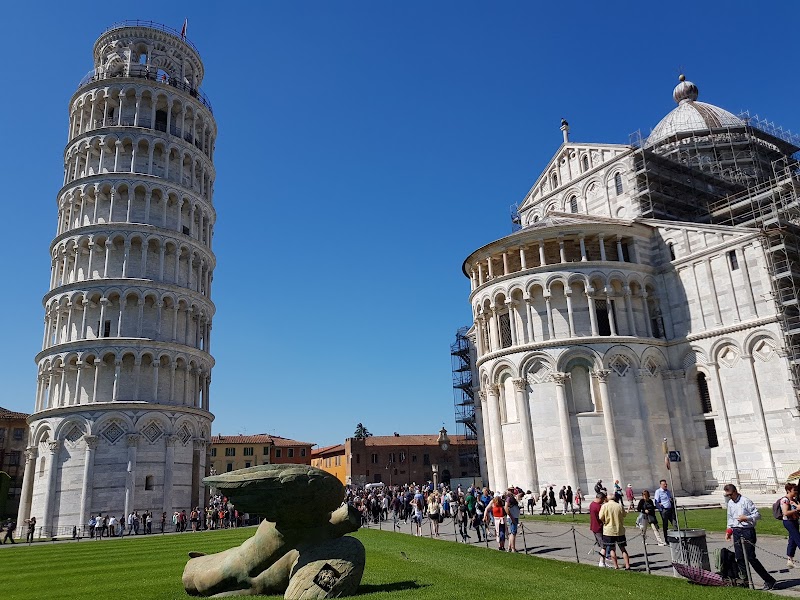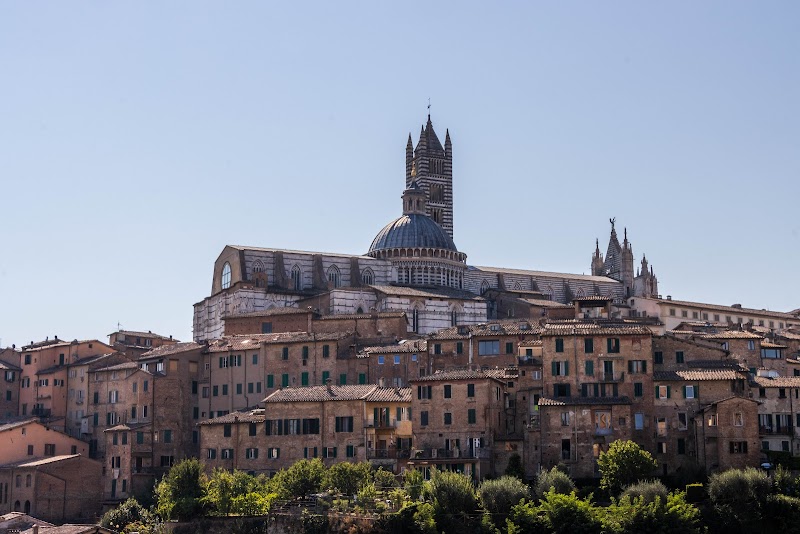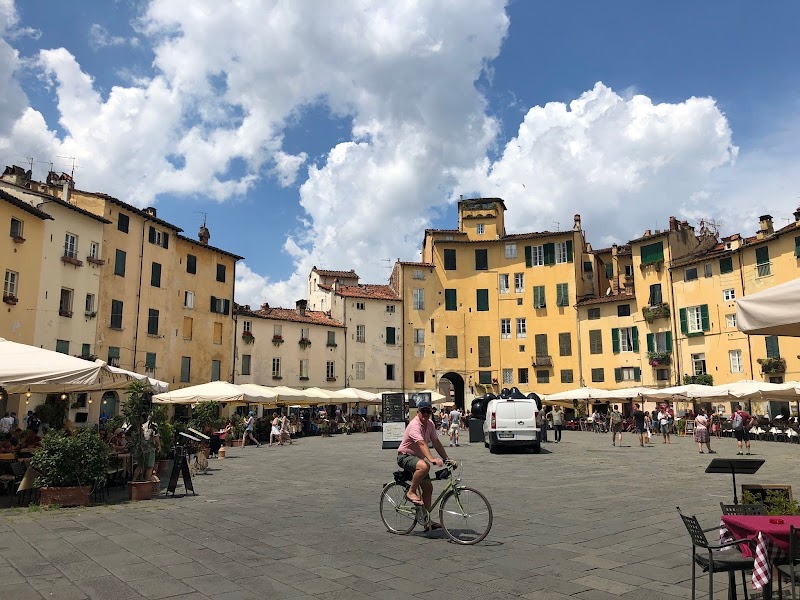Welcome to Tuscany
Did you know that Tuscany, a captivating region in central Italy, is home to more UNESCO World Heritage Sites than one might expect? From the renowned leaning tower of Pisa, historic Florence Cathedral, to the alluring vineyards of Chianti, Tuscany is a treasure trove of cultural, historical, and natural wonders. Experience the magnetism of this Italian gem that has been enthralling travelers for centuries.
To help you navigate this fantastically diverse region, we have prepared an interactive tourist map of Italy. This tool is your guide to exploring Tuscany's hidden gems and famous landmarks, allowing you to plan your journey with ease and confidence. Embark on an unforgettable journey through the serene landscapes, ancient architecture, and vibrant culture of Tuscany!
" Booking.comExploring the Unseen Beauty of Tuscany
Just when you thought you've seen it all, Tuscany never fails to impress with its lesser-known, but equally inspiring, attractions. These hidden gems, nestled away from the typical tourist trails, offer a unique perspective of the Tuscan charm and character.
Artistic Masterpieces of Cortona
Among the rolling hills of Tuscany lies the enchanting town of Cortona. Renowned for its art-drenched churches and medieval structures, Cortona is a treasure trove for art and history enthusiasts. Additionally, it's the backdrop for the famous film "Under the Tuscan Sun," adding a cinematic charm to its allure.
The Thermal Baths of Saturnia
Deep within the remote countryside of Tuscany, the mystic thermal baths of Saturnia await. These naturally occurring hot springs deliver a unique spa experience, embracing nature's finest therapeutic offerings. It's a must-visit for those seeking a rejuvenating retreat amidst the pastoral Tuscan surroundings.
The Enigmatic Etruscan Coast
For a taste of the seaside, venture to Tuscany's Etruscan Coast. This stunning coastline boasts pristine beaches, intriguing archaeological sites, and some of the region's top vineyards. Here, you can uncover the captivating Etruscan history, relax on sandy shores, and indulge in the local wine culture, all in a day.
The Silent City of Pitigliano
The historic town of Pitigliano, often referred to as the "Little Jerusalem," is a sight to behold. Perched on a tufa ridge, this silent city presents a labyrinth of narrow alleys, ancient houses, and a unique Jewish heritage. Its secluded location and intriguing past make it a captivating detour from the well-trodden Tuscan path.
The Untamed Beauty of Casentino Forests
If you're a nature lover, a visit to the Casentino Forests is a must. This vast, wild wilderness is home to a variety of wildlife, stunning landscapes, and the ancient Hermitage and Monastery of Camaldoli. Visiting the Casentino Forests is not just an excursion into nature but also a journey through the spiritual heritage of Tuscany.
Linking Your Tuscan Journey
Exploring these off-the-beaten-path locations in Tuscany provides a deeper understanding of the region's diverse charm. To help plan your journey, consider using a comprehensive tourist map of Italy, which provides an expansive view of the country's diverse attractions, including these hidden gems in Tuscany. So, next time you visit Tuscany, dare to step off the familiar routes and uncover the lesser-known but equally mesmerizing corners of this spectacular region.

Practical Information for Visiting Tuscany
Transportation and Mobility
Enjoy the convenience of Tuscany's well-connected transportation network. The region boasts a comprehensive system of trains and buses, making it easy to explore its many treasures. For those who prefer the flexibility of self-drive, renting a car offers the freedom to discover the hidden rural landscapes and picturesque hilltop towns at your own pace.
Remember, Tuscany's historic centers are often subject to ZTL zones (limited traffic zones), and driving in these areas can result in hefty fines. It's best to park outside and explore on foot or by public transport.
Schedules and Prices
Being aware of opening hours and costs can truly enhance your Tuscan journey. Museums and other cultural attractions typically open from 10 am to 6 pm, with some offering extended hours in the summer. Always check official websites for the most accurate information. Museums, like Uffizi Gallery in Florence, can cost anywhere between 10 to 20 Euros, while many churches and public spaces are free to explore.
Safety Tips
Tuscany is a safe destination, but like any popular tourist area, it's wise to stay alert and take precautions. Be mindful of your belongings, especially in crowded places like markets and train stations. It's also advisable to keep a copy of your travel documents in a safe place, in case of loss or theft.
Practical Recommendations
The best time to visit Tuscany is during the shoulder seasons of spring (April to June) and fall (September and October). During these periods, you'll enjoy moderate temperatures, fewer crowds, and the region's landscape at its most vibrant. However, if you're a wine enthusiast, consider a fall visit to coincide with the grape harvest and wine festivals.
While Italy is part of the Eurozone, it's always handy to carry some cash for smaller establishments or markets that don't accept cards. And don't forget to try a scoop of authentic Italian gelato - it's practically a rite of passage in Tuscany!

Frequently Asked Questions about Tuscany
If you still have some doubts or queries about your trip to Tuscany, we hope these frequently asked questions will help you.
1. What is the best way to experience the Tuscan cuisine?
Immersing yourself in Tuscan cuisine is not only about eating but also about learning. Consider enrolling in a cooking class where you can learn how to make traditional Tuscan dishes like pici pasta or panzanella salad. Also, participating in a food tour or wine tasting event in cities like Florence or Siena can enlighten your taste buds with the true flavors of Tuscany.
2. Are there any specific etiquette rules I should be aware of in Tuscany?
It's important to understand and respect the local customs in Tuscany to ensure a harmonious visit. For instance, when visiting churches, modest dress is required - no bare shoulders or shorts. Also, keep in mind that many shops and services close for a few hours in the afternoon for riposo, the Italian version of siesta.
3. How can I enjoy Tuscany's countryside?
Hiking and cycling are great ways to explore the Tuscan countryside. There are numerous trails that wind through the region's rolling hills, olive groves, and vineyards. Alternatively, you can embark on a horseback riding tour or a hot air balloon ride for a unique perspective of the landscape.
4. What local festivals should I look out for in Tuscany?
Tuscany hosts numerous festivals throughout the year that are deeply rooted in its culture and history. Don't miss the Palio di Siena, a traditional horse race held twice a year, or the Lucca Summer Festival, a music event attracting international artists. Also, the Carnevale di Viareggio, with its grand parades of papier-mâché floats, is a spectacle not to be missed.
5. What are some unique shopping experiences in Tuscany?
Tuscany is known for its artisan products, making shopping a unique cultural experience. You can find handcrafted leather goods in Florence, fine wines and olive oil in Chianti, and exquisite handmade ceramics in the hill town of Montelupo Fiorentino.
6. Are there any off-the-beaten-path experiences in Tuscany?
Yes, there are many less-visited places in Tuscany that offer unique experiences. For instance, you can visit the Apuan Alps for a marble quarry tour or the town of Collodi, the birthplace of Pinocchio. Also, the island of Elba, known for its beautiful beaches and crystal-clear waters, is a perfect summer retreat.


